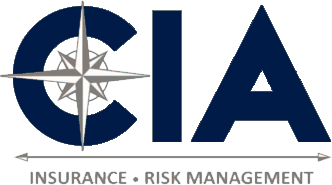Prepare your company for the worst with an IT disaster recovery plan.
Today, data loss is one of the most serious risks that every company has to face. While having the right business insurance, can help, it isn’t enough to completely eliminate your risk. Because most businesses create, manage, and store a massive amount of information, there is a lot at stake. Whether data is lost as a result of a cyberattack, hardware failure, human error, or natural disaster, the company may never recover. This is why it’s so important for every business to have an IT disaster recovery plan. Your IT disaster recovery plan should establish a set of steps that will help you recover your digital assets and return to normal business operations as soon as possible. If you have not yet developed your IT disaster recovery plan, then here are some of the suggestions to try out.
Consider the Various Components of Your System
When developing your IT disaster recovery plan, you need to consider all the critical components of your business’s data storage system. This is because an issue that affects one part of your system will likely affect the other components as well. Usually, data management and storage systems are comprised of the following components:
- Hardware– servers, desktops, laptops, wireless devices, and networks
- Software applications– email, electronic data interchanges, enterprise resource planning systems, customer management systems, office networking apps, etc.
- Data– client information, payment information, business records, financial transactions, etc.
Back-Up Your Data
Backing up your company’s data frequently will minimize your losses during a major IT disaster. To ensure that your backups are effective, you need to determine which files need to be backed up, where they will be backed up to, and who is responsible for handling the backups. When you have a secondary cache of your business’s most important information, an IT disaster will be much less damaging to your company’s operations and reputation.
Know Your Risks
To develop an effective IT disaster recovery plan, you need to know which cyberthreats to prepare for. One of the best ways to determine your risks is by working with a cybersecurity auditor. They will be able to review your security systems and protocols to identify weaknesses in your plan. Additionally, the auditor can help you develop risk mitigation strategies to address your most pressing cybersecurity risks.
Create an IT Disaster Recovery Team
Should an IT disaster strike, you need to take action immediately. This is why it’s important to put together a response team ahead of time. Your IT disaster recovery team should consist of IT and operations employees who are always ready to jump in should an issue arise. Each team member should have a designated role to avoid miscommunication and inefficiency. By having a ready-made team to deploy, your business can minimize the losses associated with an IT disaster event.
Establish a Communication Plan
You also need to create an IT disaster communication plan so you can keep your employees updated on the situation. Because you may lose the ability to use mobile devices or email to reach out to your staff, you must have another way to communicate. For instance, you can use a freestanding IRC system or remote office switchboard to get messages out to your staff. You also need to develop a plan for communicating with your vendors, suppliers, partners, and customers. Because these parties are not part of your immediate network, your best bet is creating a written communication process that allows you to get important information out as soon as possible.
These are some of the suggestions that you should try to create an effective IT disaster recovery plan for your business. Want another way to protect your company from disaster? Then make sure you have the right business insurance. For assistance with all commercial coverage needs, contact the experts at CIA Insurance and Risk Management today.
Post written by Sophia Najjar, Vice President | Commercial Risk Management (CRM)
Comments are closed.




